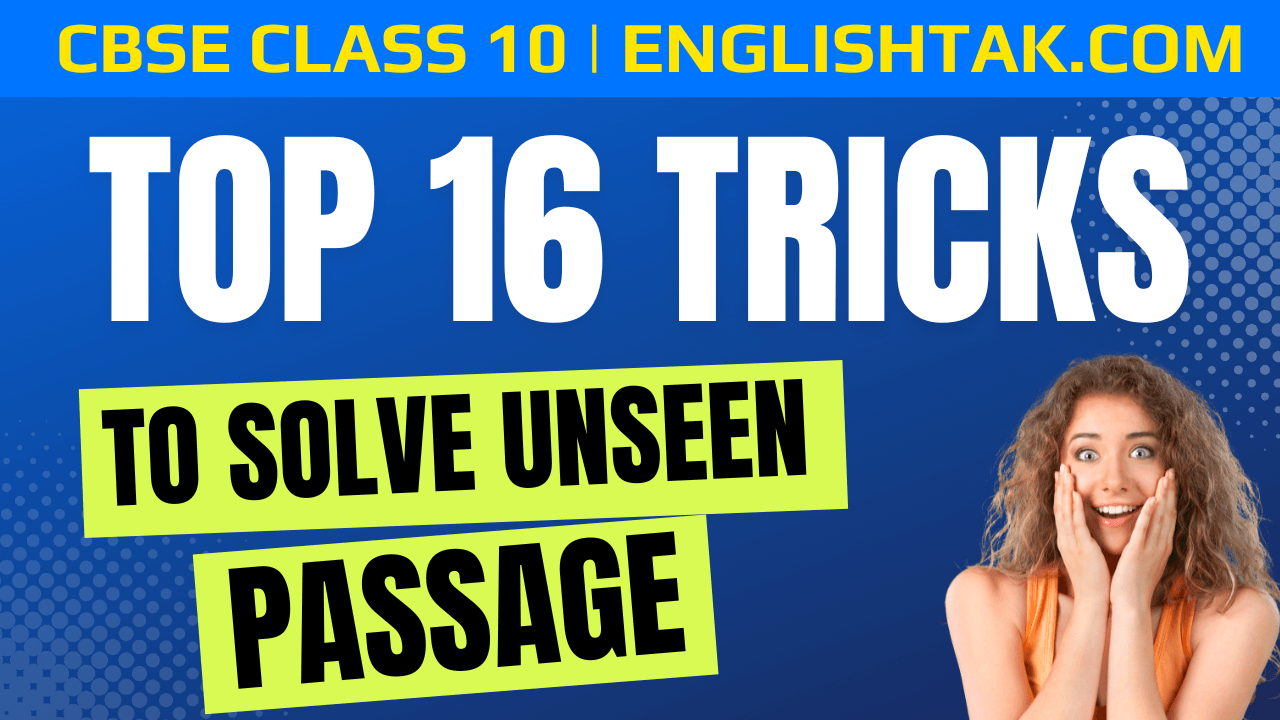![]()
Top Trick to Solve Unseen Passage
Table of Contents
Introduction
The word ‘comprehension’ means to fully understand the text using one’s intellect. Top Trick to Solve Unseen Passage. A comprehension passage is a text set for testing the reader’s ability to comprehend (understand) the meaning being implied by the text and the theme of that particular passage. The students need to to fully understand the text by using their intellect.
Questions based on a passage generally appear as a chronological relationship with the passage. Usually the first question has the answer in the initial paragraphs and so on but if the answers are inferential then the matter might have to be collected from various paragraphs and for this, one needs to be familiar with the entire passage.
Types of Comprehension Passage :
1. Factual Passages : As the name suggests, factual passages give some facts, be it historical or about the achievements of a particular person. They can also provide instructions. They can be reports or even descriptions of something.
2. Discursive Passages : These kinds of passages involve an opinion. They have a logical flow and are argumentative in nature.
3. Literary Passages : These are the extracts from a literary piece.
Top Trick to Solve Unseen Passage
CBSE Class 10 All Chapters Poetic Device pdf Download
Tips To Know
How to read a passage for comprehension :
1. Read silently. Do not read aloud.
2. Read the entire sentence together to make out the sense or meaning.
3. Read the passage thoroughly to determine the main idea before you have a good look at the questions.
4. Don’t panic about the words you do not understand.
5. Go through the questions carefully and read that part again which contains the answer.
6. Initially if you are unable to understand the meaning of a word, try to make out the meaning of that particular word in context of the passage.
7. Answers must be relevant and to the point.
8. Write complete sentences for the answers.
Top Trick to Solve Unseen Passage
9. Try to write the answers in your own words and if required they can be copied from the passage.
10. Maintain the order in which the questions appear in the test paper.
11. Read the passage thoroughly first and then the questions.
12. Give a second reading to the passage. This time keep marking the points you feel, can be the answers to the asked questions.
13. While answering the questions, be very specific and write simple and to the point sentences.
14. Write your answers in your own words as much as possible. Do not copy from the passage and write.
15. Do not give information which has not been included in the passage.
16. When asking the vocabulary questions, your answer should be in the same parts of speech as the question.






